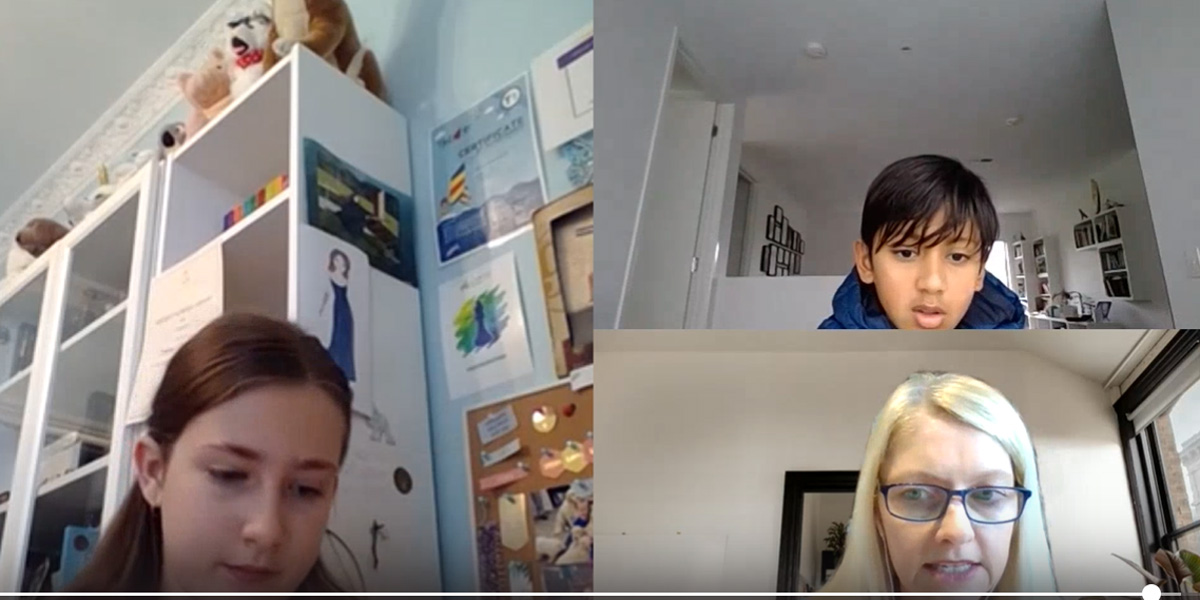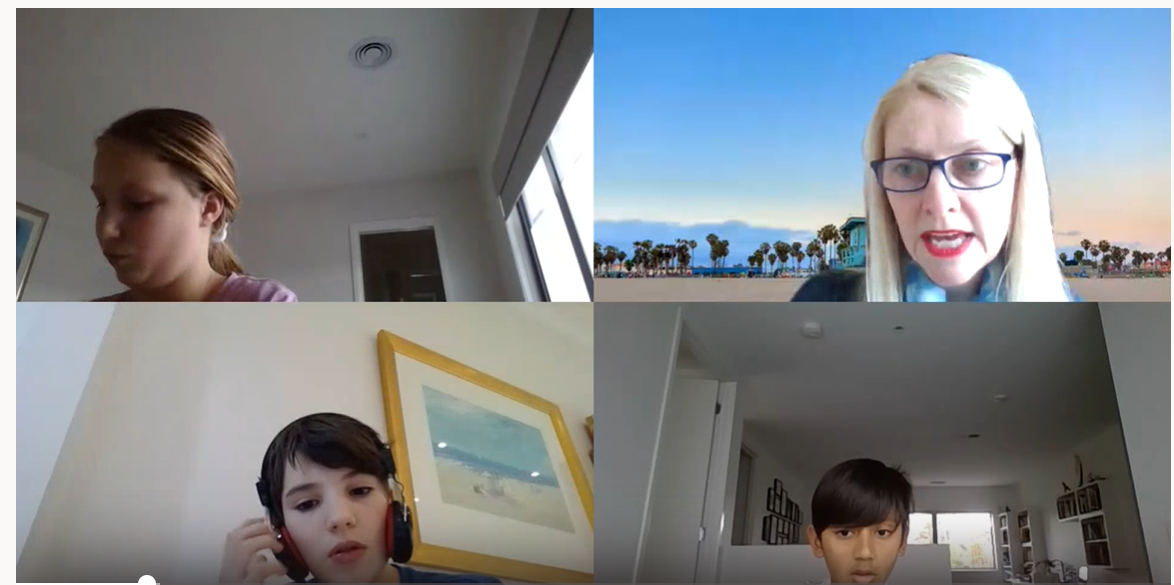<< Back to Lion August 2020
Enabling - and hearing - student voice

From left, Year 6 students Sahra Blumenthal and Aarav Agarwal with teacher Lanella Sweet: student-led learning enabled students to expand their thinking and gain insight into how they best learn
Lanella Sweet explores one of the unexpected benefits of the virtual classroom – the development of student voice – and explains why it is improving learning
Teaching and learning is, at heart, a deeply social endeavour – and there’s nothing quite like face-to-face contact to enable that. Our pivot to a virtual classroom environment in Terms 2 and 3 has been an enormous undertaking for students, their parents and teachers, but it’s also been a paradigm shift.
That shift provided many opportunities for teachers and students to develop innovative approaches to learning. I’ve been working with small groups of students, meeting in the MS Teams video environment, and it’s been truly enlightening to see how this experience has taught our students how to use various organisational tools and learning platforms, and enabled skills development in uploading, navigation, videoing, voice recording and editing. More importantly, though, it has essentially given students greater voice and enabled them to take even more ownership of their own learning.
What is student voice?
So what is student voice? As Michael Fielding defines it in ‘”New wave” student voice and the renewal of civic society,’ student voice ranges from students ‘reporting’ through their learning so that teachers understand what and how best to teach next, through to students being, in his words, ‘The initiating force in an enquiry process, which invites teachers’ involvement as facilitating and enabling partners in learning.’ Student voice, Fielding explains, at its most active enables student-led learning.

From top, anticlockwise, Year 6 students Mareli Opperman, Campbell Holtham and Aarav Agarwal make authentic decisions, in partnership with teacher Lanella Sweet
The virtual classroom experience has certainly enabled students to own life skills like organisation, self-motivation and initiative, self-direction and goal-setting, self-monitoring and reflection, and productivity. More than this, though, it has enabled them to make authentic decisions, in partnership with adults, which allows individual learning with a level of autonomy and power to meet the demands and appropriately engage in opportunities of the 21st century.
Student-led, self-paced learning
Working with students in the more flexible remote setting, one of the most interesting things I've found was that students are able to work at their own pace – fast, as it happens – and apply their expanding knowledge more broadly and deeply, making what education researcher Nancy Kober calls ‘far transfers’ from one area of content knowledge to another at a complex level. The remote learning environment has meant students can make their own decisions about allocating time, learning a skill or new concept during virtual classes with their peers and teachers via video, and then making their own decisions to expand, apply and transfer their knowledge and skill to other areas of choice. This self-paced, student-led learning has meant they not only inquire more deeply and expand their own thinking, but also gain insight into their learning and how they best learn.
What happens when students, and teachers, listen to student voice?
Having time and space to hear their own voice enables students to take their own learning down a variety of avenues to explore in greater depth and identify the relationships between things. What has really enabled them to thrive has been the opportunity to take new skills, concepts and content and make this personally relevant through their own curiosity and discovery. Having time to develop their own voice has enabled them to become absorbed in their learning but also enabled their teachers to understand how capable students are of providing rich, nuanced accounts of their experience. And as Catherine Simmons and colleagues have noted, enabling and hearing students’ voices is a way to actively engage them in school about matters that concern them and that can inform our continuous efforts to improve teaching and learning.
Lanella Sweet is an enrichment teacher at Wesley’s Elsternwick Campus.